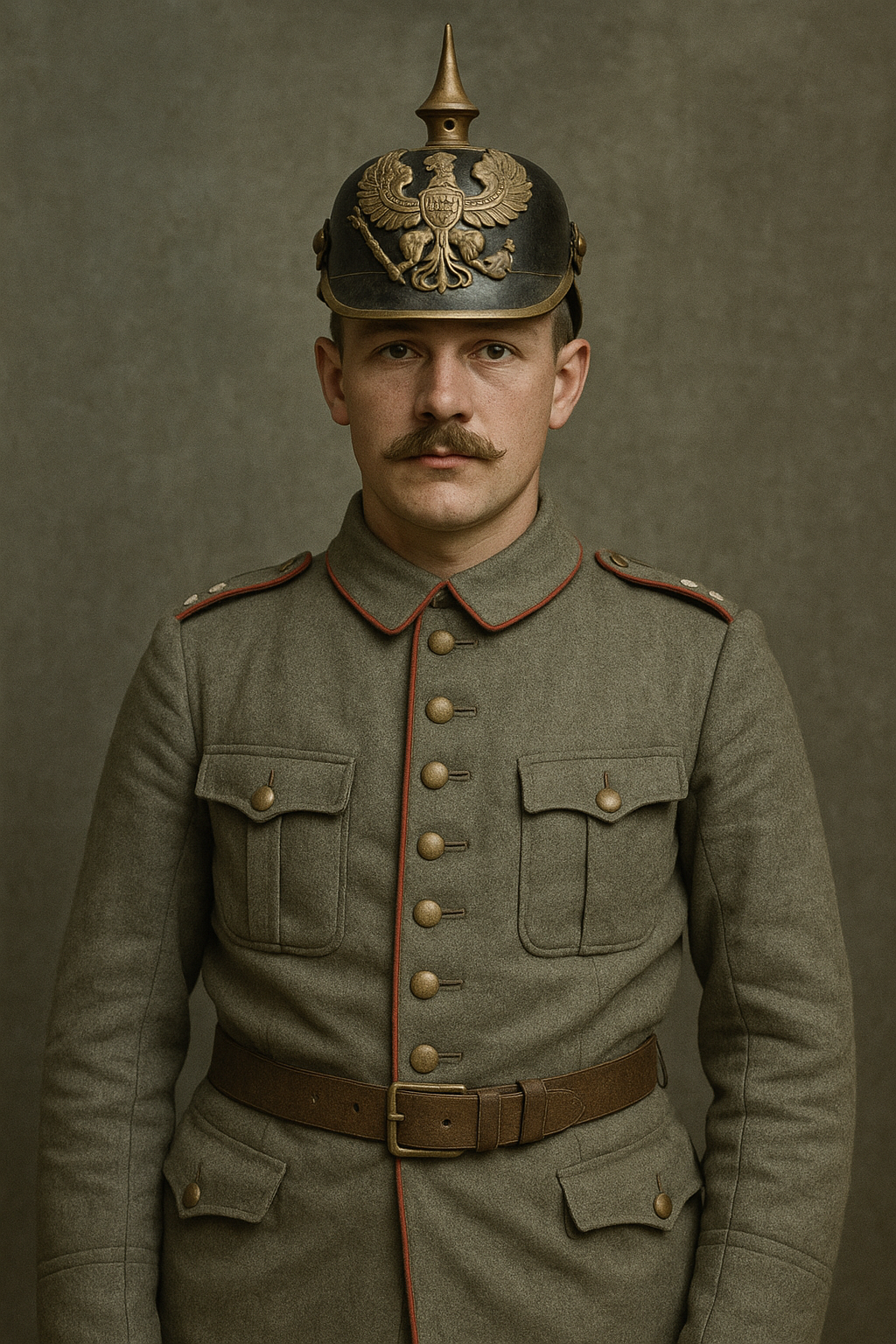
The WWI German Uniform: Exploring Authentic Tunics, Hats, and Historical Legacy
Published on Jul 23, 2025
The German Uniform WWI: A Symbol of History, Authority, and Design
The German uniform WWI isn’t just a piece of clothing—it’s a symbol of military tradition, technological evolution, and cultural identity. From the early days of the Imperial German Army to the muddy trenches of 1914–1918, the uniform evolved both in form and function. This article dives deep into the iconic elements like the German WWI hat (Pickelhaube), the WWI German tunic, and the materials and meanings behind the uniform’s evolution.
Whether you're a collector, historical reenactor, or just fascinated by military history, this detailed guide will help you explore the authenticity and significance behind the German WWI uniform.
Origins of the WWI German Uniform
The traditional German military attire of the early 1900s was influenced by Prussian discipline and design. As the Great War erupted in 1914, the uniforms evolved quickly to meet the demands of trench warfare, reflecting practical changes while retaining distinctive national identity.
The M1907/10 tunic, standard at the beginning of WWI, came in field gray (feldgrau)—a strategic shift from bright colors like blue or red, offering better camouflage. These changes marked a pivotal moment in military uniform design.
Key Components of the WWI German Uniform
1. German WWI Hat: The Pickelhaube
The most visually iconic part of early German military dress is the Pickelhaube—a spiked helmet originally made of leather, often adorned with brass fittings and regimental insignia. It symbolized imperial strength but proved less effective in battle. By 1916, it was largely replaced by the Stahlhelm, a steel helmet offering superior protection.
Collectors today still covet the German WWI hat for its craftsmanship and historical symbolism. Paddelaters offers access to various reproductions and detailed guides on how to choose an authentic piece.
2. WWI German Tunic: The Backbone of the Uniform
The WWI German tunic, particularly the M1910 and M1915 models, was made from thick wool and featured stand-up collars, shoulder straps (with color-coded piping by branch), and brass or stamped buttons. These tunics were tailored to maintain appearance while serving practical needs like warmth, storage, and camouflage.
Key features included:
- Field grey wool
- Six-button front
- Two breast pockets
- Branch-specific piping
These tunics are central to both reenactments and museum-quality collections. If you're seeking top-quality replicas, the Imperial German Army Uniform collection at Paddelaters is an excellent place to start.
3. Trousers, Boots, and Equipment
German soldiers wore stone-grey trousers with reinforced knees and jackboots or ankle boots with gaiters. Infantrymen carried cartridge pouches, entrenching tools, and bread bags—each a vital component of daily trench life.
Over time, leather shortages led to adjustments in materials and construction, again demonstrating the evolving logistics of wartime production.
Trench Coats and Greatcoats: Functional Fashion of the Trenches
One of the most fascinating aspects of WWI German attire is the trench coat and greatcoat, worn for warmth and protection during long stretches in the damp trenches. These coats were often double-breasted and reached below the knee, providing both utility and symbolic authority.
To explore more about these heavy-duty garments, read our detailed blog: WWI German Trench Coats and Greatcoats: Historical Fashion and Function.
German Uniform vs. Allied Forces
Compared to their British and French counterparts, the German uniform WWI was more rigidly designed in the early war years. While Allied forces rapidly adapted their gear for trench conditions, German uniforms retained some traditional features longer, reflecting the imperial mindset.
By 1916, practicality overtook aesthetics across all nations, leading to simpler, darker, and more functional garments.
Historical Reproduction: Why Authenticity Matters
Authentic reproduction uniforms preserve not only the look but the feel and function of historical military attire. Whether for reenactment, education, or display, having a properly researched uniform is essential.
At Paddelaters, you'll find a range of museum-grade reproductions that reflect historical patterns, colors, and tailoring. Learn more in our expert blog guide: Inside the WWI German Outfit: Authentic Uniforms & 1914 Reproductions.
Where to Buy: WWI & WWII German Uniforms
For enthusiasts of military history and uniform collectors, Paddelaters offers one of the most comprehensive collections of WWI and WWII German military outfits available online. Every piece is made with historical accuracy in mind.
🔗 Explore WWI German Uniforms Collection
Whether you're looking for a full WWI German tunic or just the perfect German WWI hat, these curated categories have what you need.
Conclusion: A Timeless Legacy of Military Craftsmanship
The German uniform WWI era tells a story of pride, evolution, and resilience. From the decorative elegance of the Pickelhaube to the durable design of trench greatcoats and woolen tunics, every item carries a piece of history.
Whether you’re diving into reenactment, expanding your collection, or studying military fashion, Paddelaters provides the historically accurate uniforms and guides to make your journey authentic and informative.
Rekindle the legacy—explore, learn, and collect with Paddelaters.
